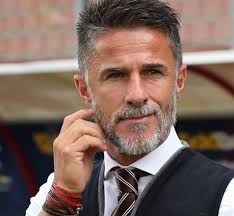Brilliant virtuoso performed for popes and noblemen
Lute player and composer Francesco Canova da Milano was born on this day in 1497 in Monza near Milan in Lombardy.
Francesco Canova da Milano was known
as the greatest lutenist of his time in Europe
Nicknamed il Divino by his contemporaries, Francesco Canova da Milano was known throughout Europe as the leading composer of his time for the lute. More of his work has been preserved than that of any other lutenist from the period and he influenced the work of other composers for more than a century after his death.
Francesco’s father, Benedetto, and his older brother, Bernardino, were both also talented musicians.
Francesco studied the lute as a child and by 1514 he was known to be a member of the papal household in Rome. He and his father became private musicians to Pope Leo X in 1516.
His father was employed until 1518, but Francesco stayed with Leo X till the pope’s death in 1521.
Francesco was still in Rome in 1526, when he and another lutenist performed for Pope Clement VII. At the time he was considered one of the greatest virtuoso performers on the lute.
In 1528 he obtained a position at a church in Milan and between 1531 and 1535 he was in the service of Cardinal Ippolito de’ Medici. He became lute teacher to Ottavio Farnese, Duke of Parma, the grandson of Pope Paul III, in 1535.
Some of Francesco’s compositions were published in France in 1529 and five volumes of music for the lute, most of which was composed by Francesco, were published in Milan in 1536.
 |
| Ottavio Farnese, the Duke of Parma, was among Francesco's students |
Later that year, Francesco, who had become wealthy, married Clara Tizzoni, a noblewoman from Milan.
They lived in Milan briefly, but by 1539 Francesco and his father were back in Rome, employed by the papal court again.
Francesco’s death was recorded in January 1543 and it is known that he was outlived by both his father and older brother. He was buried in the Church of Santa Maria alla Scala in Milan, a church which was later pulled down to make way for the construction of La Scala opera house.
Today, there are more than 100 pieces of music composed by Francesco still in existence that are sometimes performed.
Francesco’s music represents the transition from the loose improvisational style of his predecessors to the more complex style of later lute music. He was said to be heavily influenced by the vocal music of his time.
A collection of his lute music, edited by Arthur Ness, was published by Harvard University Press in 1970.
Travel tip:
The Iron Crown of Lombardy is housed in
Monza's 15th century Duomo
Monza, the city where Francesco Canova da Milano was born, is about 15km (9 miles) to the north east of Milan. It is famous for its Grand Prix motor racing circuit, the Autodromo Nazionale Monza, which hosts the Formula One Italian Grand Prix. The city is also home to the Iron Crown of Lombardy, a circlet of gold with a central iron band, which according to legend, was beaten out of a nail from Christ’s true cross and was found by Saint Helena in the Holy Land. The crown is believed to have been given to the city of Monza in the sixth century and is kept in a chapel in the Cathedral of Saint John. When Napoleon Bonaparte was declared King of Italy in 1805, he was crowned in the Duomo in Milan and the Iron Crown had to be fetched from Monza before the ceremony. During his coronation, Napoleon is reported to have picked up the precious relic, announced that God had given it to him, and placed it on his own head.
Travel tip:
The Church of Santa Maria alla Scala, built in 1381,
was demolished to make way for the theatre
The Church of Santa Maria alla Scala, where Francesco Canova da Milano was buried, was built in Gothic style in Milan in 1381. The church was named in honour of Beatrice Regina della Scala, the wife of Bernabo Visconti, who had commissioned the building. The church was demolished in 1776 to make way for a new theatre, which became known as Teatro alla Scala, and was officially inaugurated in 1778. La Scala has become the leading opera house in the world and many famous singers have appeared there. The theatre is in Piazza della Scala in the centre of Milan across the road from the Galleria Vittorio Emanuele II, an elegant arcade lined with cafes, shops and restaurants,which was built to link Piazza della Scala with Piazza del Duomo, Milan’s cathedral square.
Also on this day:
1750: The birth of composer Antonio Salieri
1943: The birth of footballer and politician Gianni Rivera
1954: The birth of astronaut Umberto Guidoni
Picture credit: Monza duomo by Raffaella Faverzani from Pixabay




















